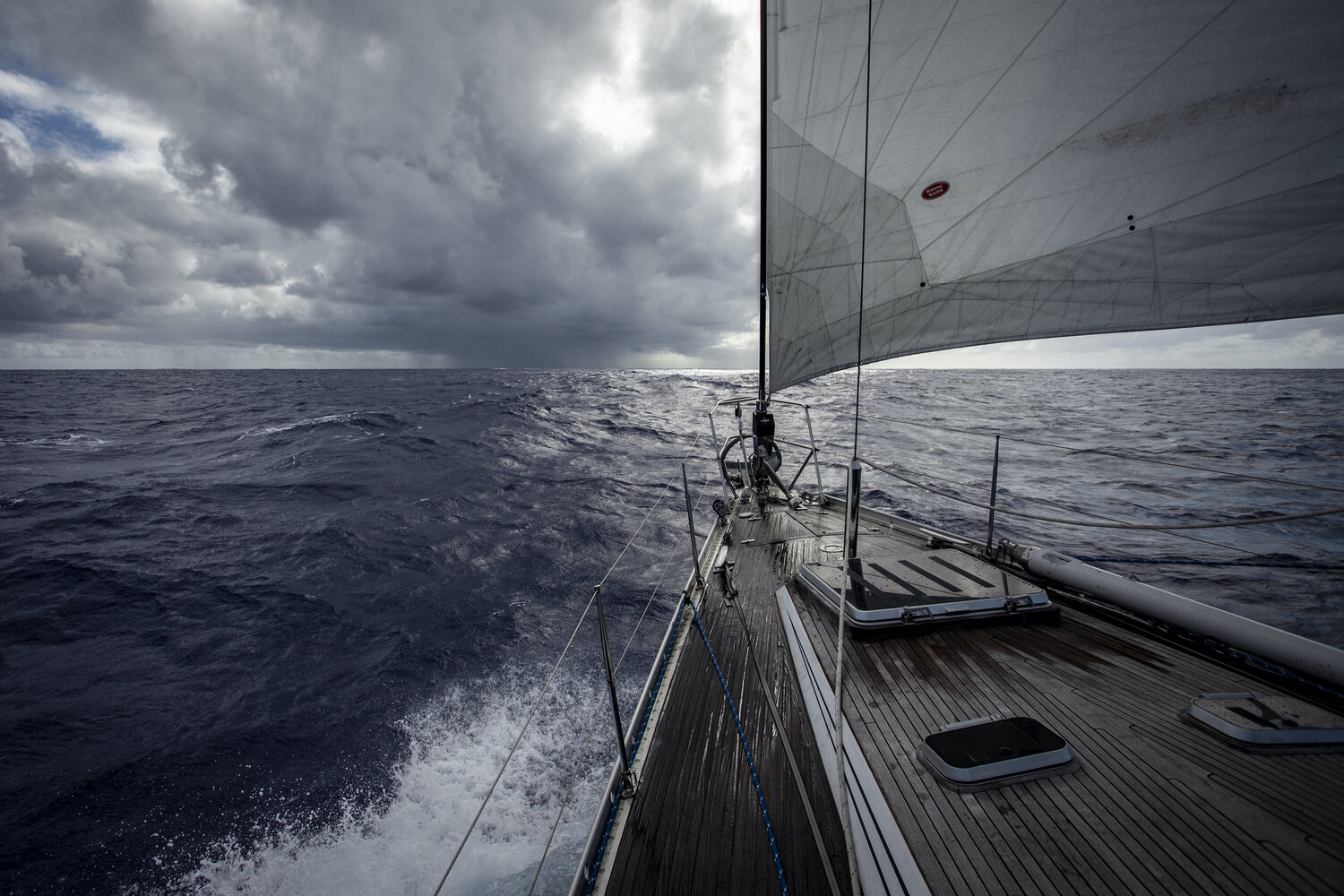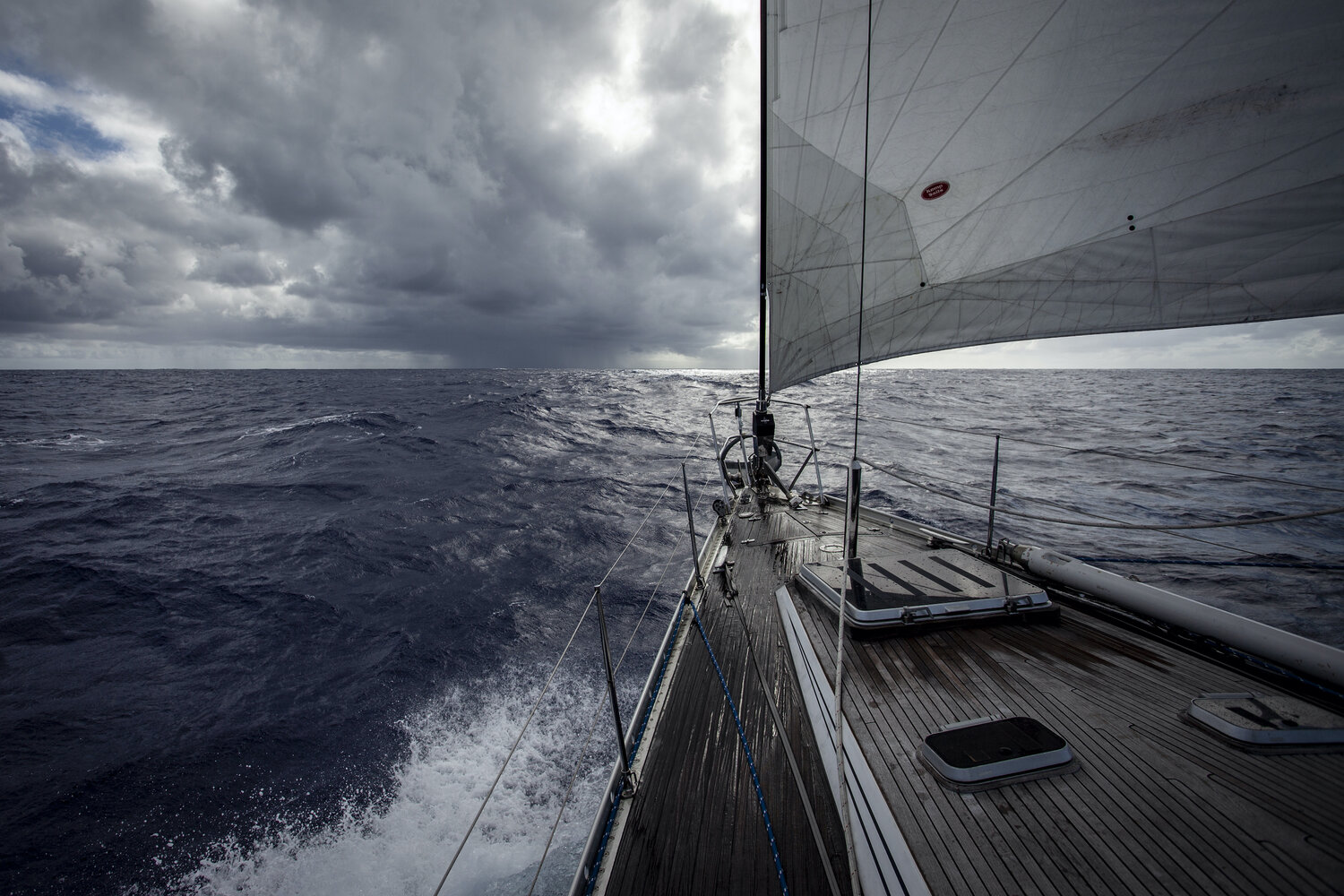
Shannon and I were waiting for a shockwave. She even suggested we should drop the sails in anticipation and I didn’t immediately disagree. This was all happening pretty quickly, and was genuinely unnerving. All I could think of was that the US had just gotten nuked. The white veil appeared to me like what the Northern Lights might look like, kind of devoid of shape, but the way it began concentrated, then dispersed, and that leading edge halo in a perfect arc looked to me just about how a nuclear explosion might appear from a distance.
I was about to come off watch, but there was no chance I’d sleep without an explanation to ease my spiraling mind. I emailed our shore support – Mia, the guys at WRI, and August back in Norway – then kept dialing into the Iridium GO to check our inbox. Finally, an hour or so later, WRI & August replied to put our fears at ease.
Turns out our nuclear bomb was an Atlas V rocket launch from Cape Canaveral that we’d somehow witnessed from over 1,000 miles away. That streaking halo in the sky was likely the rocket itself, or the wave of energy it left behind as it pierced the sound barrier high above us. August, an unabashed space nerd, explained what was going on when I pressed him for more info:
“People usually tell me to shut up about rocket launches, so I will make the most of this opportunity!
The rocket you saw was an Atlas V launched by the United Launch Alliance out of Cape Canaveral at 17:32 EST. Very powerful thing. Almost 200 feet high and carrying 700,000 pounds of rocket fuel. You probably saw the light from the moment of ignition. The trajectory seemed to take it off to the ENE over the Atlantic, not far from your position.
The rocket’s payload is confidential, but the client is the US National Reconnaissance Office, part of the CIA. Very probably a spy satellite, headed for Low Earth Orbit. Code name NROL-101. Because of this secrecy, the launch had not been promoted, and the precise trajectory is not public. They even cut the livestream of the launch!
So, there are no warheads involved and there will still be a civilization for you to return to ;)”
Whew! In hindsight I must now admit that it was one of the more spectacular things I’ve seen at sea.
—
ESMERELDA
Tonight’s been an active night. When I got up at 0200, the VHF radio crackled to life with a professional American voice on the end of it speaking to a boat called ESMERELDA. Mind you, we’re now 170 miles east of Bermuda with no ships around, so it was odd hearing such a clear VHF transmission, which is only line-of-sight range, normally about 20 miles max at sea-level on a boat.
The voice was from an airplane. About 250 miles to our northwest, a boat had apparently requested assistance and the US had flown either a military or USCG plane over their position. We could only hear one side of the call, with the plane chatting to the boat, and to Bermuda Radio, the rescue coordination center (MRCC) in this part of the Atlantic.
I caught ESMERELDA’s position as the radio operator on the plane repeated it. It put them about 140 miles due north of Bermuda, in the thick of the strong SW’ly wind ahead of the remnants of ETA, and where they’d have been now for several days as the storm pushed NE up the US coast. (Earlier in the day, we heard Bermuda Radio issuing weather advisories for the region north of the island, calling for 40-50 knot winds and 8-12 foot seas). I felt a bit of a chill when the last transmission I heard from the plane was this:
“We understand you got caught in a windstorm and have an injured crew member who needs immediate evacuation. FYI a USCG plane will be onsite in 30-60 minutes.”
Then the radio went silent again, and the crew and I who are currently awake at 3 in the morning paused for a moment to wish them luck.
—
That’s two instances tonight where being cut off from the outside world makes us feel even that more remote out here. That feeling of unease when that rocket launch happened, and us not being able to figure out what it was, really makes you feel isolated. Likewise only hearing one side of the VHF call during what sounds like a genuine at-sea emergency. Makes you feel small out here in the Big Blue.
Today marks a full week since we’ve been offshore, and we’ve now sailed over 1,000 miles since leaving Annapolis, with just under 1,000 to go towards Antigua. The first thousand miles have not been without drama, but has been wonderful (if upwind!) sailing. Our next immediate challenge will be traversing the high pressure center on Sunday where we’ll sail right into a calm, then negotiating a small tropical wave to our south early next week which should bring us increased squalls and showers and maybe more wind.
As for tonight, the blast reaching continues under starry skies! Until next time…
HOLD FAST!
// Andy & the ICEBEAR Crew

Leave a Reply